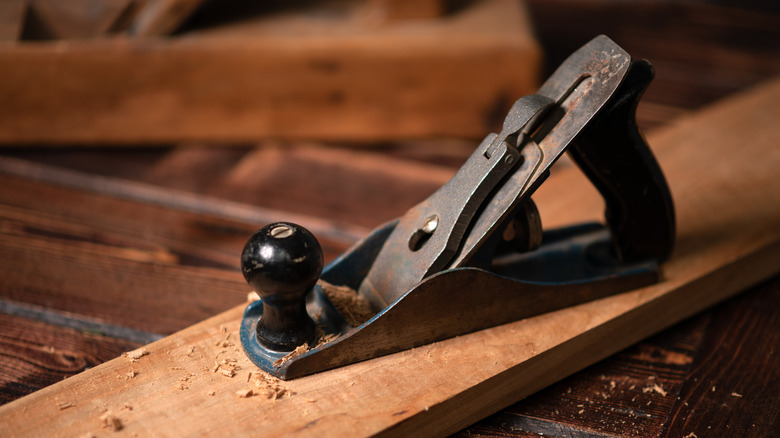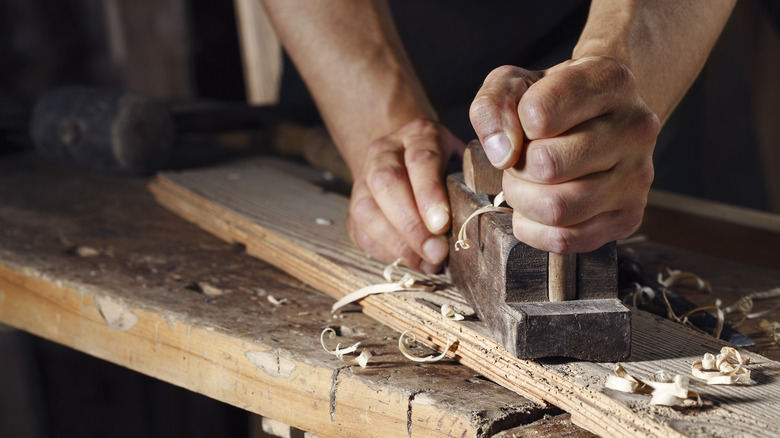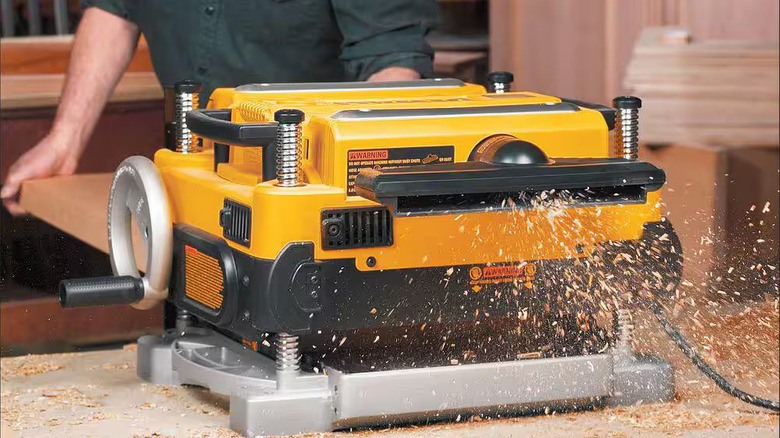What Is A Hand Planer & What Can Woodworkers Do With One?
We may receive a commission on purchases made from links.
A proper woodworker's workshop is equipped with many essential woodworking power tools and implements to shape that lumber to your will. The obvious implements you'd find at the workbench include things like saws and sanders, but that's not all there is. In fact, one of the most important woodworking tools is also one of the oldest, dating back thousands of years: the planer. With this simple tool, ancient craftsmen carved and shaved their futures.
To clarify, we're specifically talking about hand planers here, tools designed for shaving and shaping wood with no particular electrical components. There are powered planers available, and they have their benefits over their simpler siblings, but if you're looking to get up close and personal with lumber, particularly delicate varieties of lumber, and carefully shave it down with the utmost precision, nothing beats a hand planer. It does take more effort, and quite a bit more time than something battery or gas-powered, but there's a reason that the hand planer is still largely considered an indispensable part of the woodworker's toolbox: it's still great at what it does, all these years later.
Hand planers are ideal for delicate, precision woodworking
The way a hand planer works is fairly simple. You hold it by its two handles, place it over a length of wood, and press the front down onto it. As you push the planer forward, the wood will gradually shave off, dispensing out of the top of the tool as a long ribbon. It's kind of like a cheese grater, except the wood comes off in one long piece instead of a bunch of grated shavings.
The major application of a hand planer is smoothing down the rough outer surface of a fresh piece of wood. If you were making a chair, for example, you wouldn't want to just nail a bunch of raw boards together because their outer layers are prickly and uneven. By shaving those layers away and exposing the smooth inner layers, you end up with lumber that's soft and clean to the touch, perfect for making furniture or decorations. Hand planers are also great for upkeep on those same wooden creations, which may have become warped with the passage of time. If you've got a wooden door with a little corner that's jutting out, scratching the floor, a few quick passes with the planer will smooth it out.
A hand planer is best for delicate, precision woodworking. If you've got a particularly pricey piece of lumber on your hands, like mahogany, you wouldn't want to accidentally damage it with a power tool. Thus, a hand planer is ideal for gently shaving it into shape.
Hand planers do take more time and effort to use than power planers
As with any tool that's been around for many years, there have naturally been many attempts to improve and expedite its functions. As we mentioned, with planers in particular, there are powered alternatives to the traditional hand planers. While hand planers are best for focused, precision work, that comes with the drawback of time and strength investment. Carefully shaving down a long chunk of wood almost entirely under your own power is quite exhausting, and depending on the size of the wood and what you're trying to do with it, working it with a hand planer can take hours.
If you have a large chunk of wood and don't need to get too precise with shaping it, it may be better to just go for a powered planer instead. Handheld and tabletop power planers have wide working surfaces, able to cover the entire width of a board in a single pass, as well as adjustable depth settings for getting your wood properly shaved down in one fell swoop. Save the hand planer for the little details, and stick to a power planer for the preliminary large-scale work. You can find good benchtop power planers for a woodworking shop at Home Depot or at-home woodworking tools at Harbor Freight.


